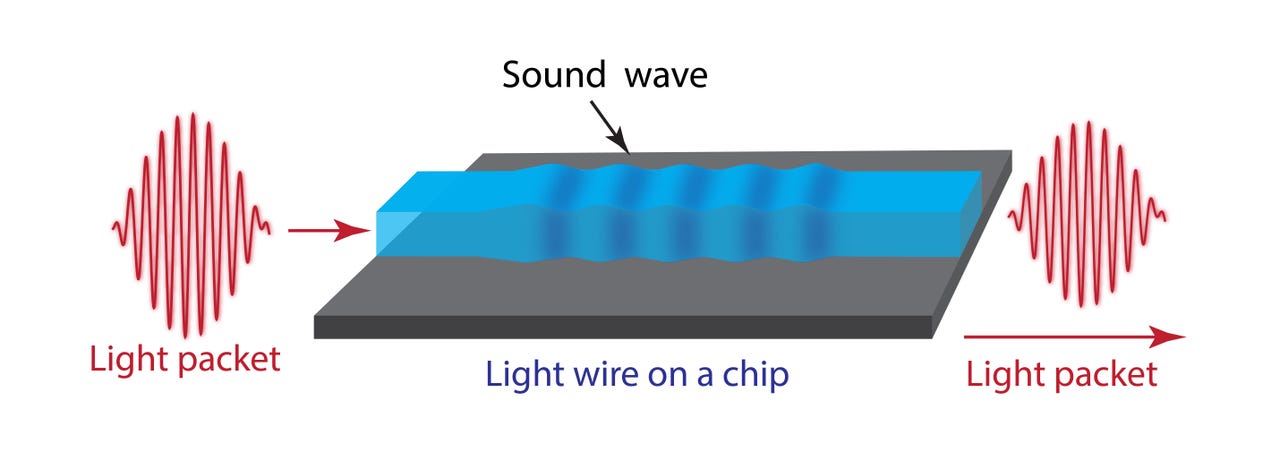Sydney Uni touts simultaneous control of light and sound on small scales


Illustration of basic principle of light-sound interaction
The University of Sydney has announced a breakthrough from a team of scientists that it says promises to revolutionise 5G and broadband networks, sensors, satellite communication, radar systems, defence systems, and radio astronomy.
The university is calling the breakthrough a "research renaissance" into chip-based control of light-sound interactions.
The scientists have found a way to adapt the feedback process that occurs when data travels through fibre. Feedback occurs when the light waves bounce around inside silica and polymer fibres, creating tiny vibrations that USyd said leads to feedback packets of sound or acoustic waves, known as phonons.
"This feedback causes light to disperse, a phenomenon known as 'Brillouin scattering'," the university explained in a statement.
"For most of the electronics and communications industry, this scattering of light is a nuisance, reducing the power of the signal."
See also: Researchers break speed record for transmitting data using light bulbs (TechRepublic)
Professor Ben Eggleton, Director of the University of Sydney Nano Institute, said the application of this interaction between light and sound on a chip offers the opportunity for a third-wave revolution in integrated circuits.
"It's no exaggeration to say there is a research renaissance into this process under way," he said.
As the university explained, the microelectronics discoveries after World War II represented the first wave in integrated circuitry, which led to the ubiquity of electronic devices that rely on silicon chips, such as mobile phones.
The second wave came at the turn of this century with the development of optical electronics systems that have become the backbone of large data centres around the world.
The third wave is with sound waves, USyd said, adding the big advance here is in the simultaneous control of light and sound waves on really small scales.
"Not only do we see immense technological applications, but also the wealth of pure scientific investigations that are made possible. Brillouin scattering of light helps us measure material properties, transform how light and sound move through materials, cool down small objects, measure space, time and inertia, and even transport optical information," said Professor Gaurav Bahl from the University of Illinois at Urbana-Champaign, who co-authored a review paper published on Tuesday in Nature Photonics alongside Eggleton.
"One of the fascinating aspects of integrated Brillouin technology is that it spans the range from fundamental discoveries in sound-light interactions at the quantum level to very practical devices, such as flexible filters in mobile communications," another co-author Professor Michael Steel from Macquarie University added.
RELATED COVERAGE
- Sydney-Singapore team manipulate light wave on a silicon chip
- RMIT touts faster internet thanks to 'twisted light'
- Australian National University invention brings sci-fi holograms a step closer
- University of Sydney develops quantum trick to block background sensor 'chatter'
- Microsoft and USyd claim invention of key quantum computing component
- Sydney Uni predicts the unpredictable in quantum computing advancement
- ANU successfully measures light for quantum internet data transfer
- UNSW and Sydney Uni quantum partnership already bearing fruit